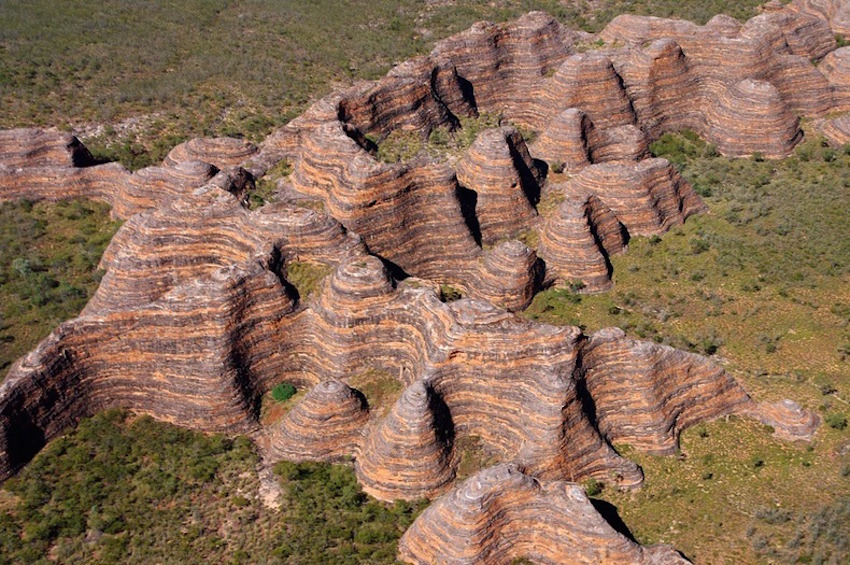The Bungle Bungle Range, in Purnululu National Park, is one of the most fascinating geological landmarks in Western Australia. The range features distinctive beehive-shaped sandstone towers and conglomerates alternately striped in orange and black bands. The rocks rises up to 578 metres above sea level, and stand 200 to 300 metres above a woodland and grass-covered plain, with steep cliffs on the western face. From an airplane, the Bungle Bungle Range is an imposing sight.
The sedimentary rocks of Bungle Bungle were formed in the Ord Basin 375 to 350 million years ago, when active faults were altering the landscape. The combined effects of wind from the Tanami Desert and rainfall over millions of years shaped the domes. Although the formation appears solid, the sandstone is extremely fragile. The weight of overlying rock holds the sand grains in place, but when this is removed, the sandstones are easily eroded. The rounded tops reflect this lack of internal strength. Water flowing over the surface will exploit any weaknesses or irregularities in the rock, such as cracks or joints, and rapidly erodes the narrow channels that separate the towers.

One of the most obvious features of the sandstones is the alternating orange and black or grey banding. The darker bands consist of permeable layers of rock, which allow water to move through with ease. Water keeps the rock surface moist allowing dark algae to grow on them. The less permeable layers in between are covered with a patina of iron and manganese staining, creating the orange bands. These outer coatings help to protect the lower parts of the towers from erosion.
A 7 km diameter circular topographic feature is clearly visible on satellite images of the Bungle Bungle Range. It is believed that this feature is the eroded remnant of a very ancient meteorite impact crater that probably hit the area some 250 million years ago. This structure is famously known as the Piccaninny impact crater.
From our partners:








This feature originally appeared in Amusing Planet.

















